
Race to the South Pole in Images
South Pole Intro
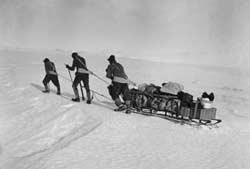
In the early days of the 20th Century, with so much of the world already mapped, Antarctica, a freezing, distant, continent with no native human population, remained the last unconquered wilderness. In 1911, two teams of explorers faced off against punishing weather, vast distances and each other in the quest to become the first humans to reach the South Pole.
Norwegian explorer Roald Amundsen would claim the prize, reaching the pole almost a month before his rival, British naval officer Robert Scott. Amundsen would return home to a hero's welcome, while Scott never made it back from the South Pole, dying from starvation and frostbite during the trip back to his base camp.
A new exhibit at the American Museum of Natural History (AMNH) in New York called "Race to the End of the Earth" details the race between Amundsen and Scott. Here are some of the artifacts and pictures left by the two men, and their teammates, which the exhibit uses to recreate the sense of adventure and dread that pervaded the end of the age of exploration.
Roald Amundsen
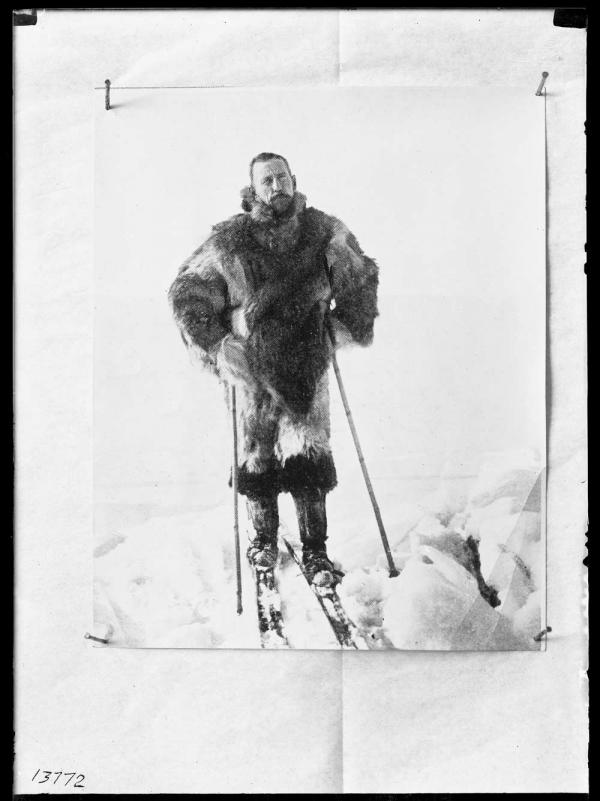
This portrait of Amundsen displays both the skill and preparation that allowed him to win the race to the South Pole. An expert skier, Amundsen grew up in a snowy environment that prepared him for polar explorations. Additionally, Amundsen lived for years with Netsilik Eskimos near the North Pole. Not only did they teach him tips for surviving in the cold, but they taught him the importance of fur clothing, which he is wearing in this picture.
Robert Scott
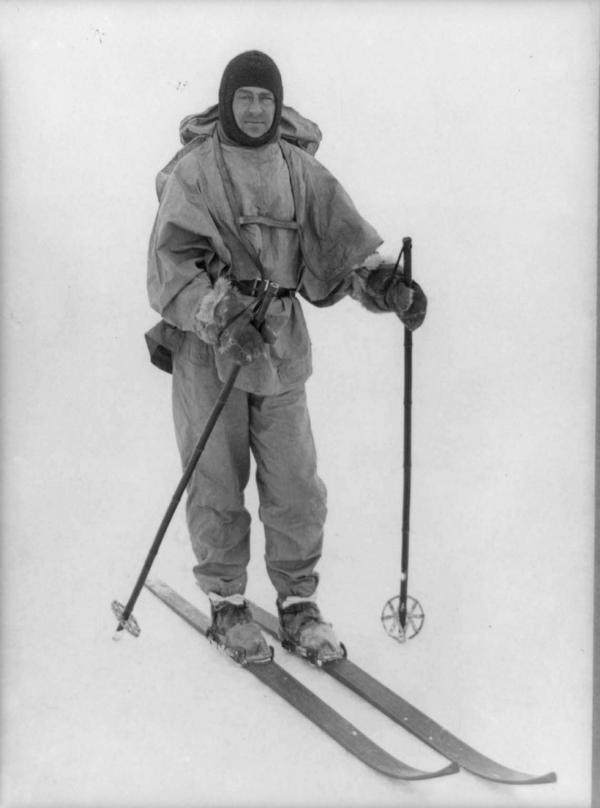
Scott had traveled to Antarctica once before, on a 1901-1904 expedition with famed explorer Ernest Shackleton, but never experienced the extreme weather of the South Pole. In this picture, he can be seen in the wool clothes that everyone on his team wore. Less well-suited for the climate than Amundsen's furs, this wool garb became just one of the many factors that ultimately prevented Scott and his team from safely returning from the South Pole, said Ross MacPhee, curator of the exhibit.
Chronometer
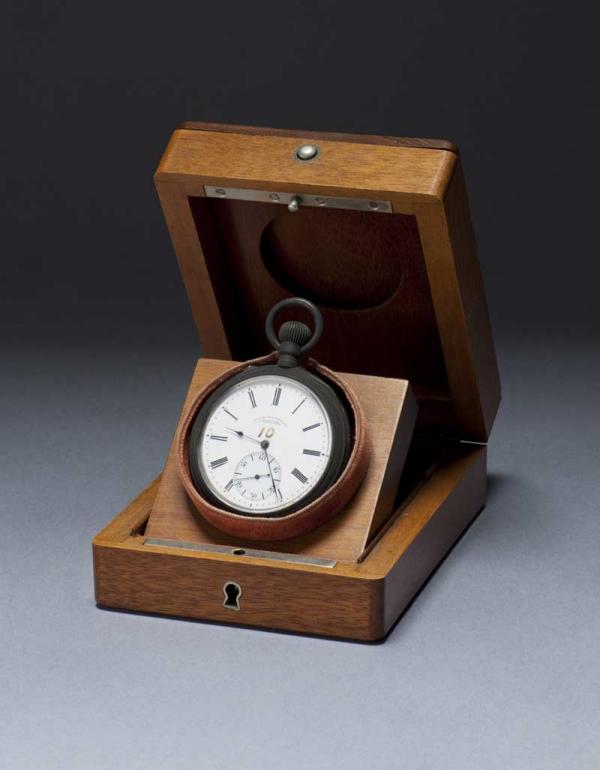
Explorers needed these extremely accurate time pieces to navigate across the vast, featureless expanses that characterized both the sea they crossed to reach Antarctica, and the frozen ice sheet of the South Pole itself. This chronometer belonged to Amundsen, who brought it and eight others on his journey.
Dog sledge
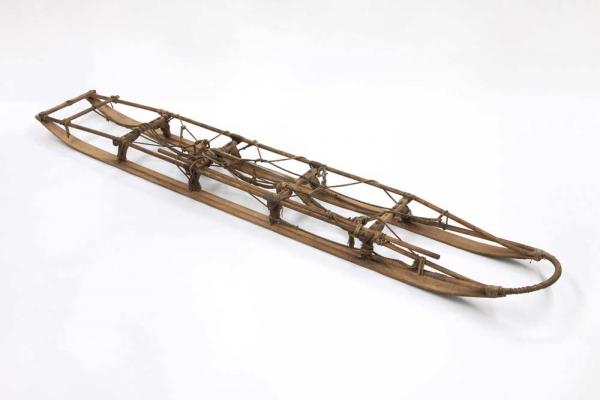
Borrowing a trick he learned from the Eskimos, Amundsen used dogs to haul his gear across Antarctica. Supremely well suited to the work and the climate, the dogs dragged tents, clothes, sleeping bags, rifles, skis and fuel on sledges like this one. At 11.4 feet (3.5 meters) in length, each sledge could carry 668 pounds (303 kilograms) of food, according to the AMNH.
Scott's men hauling gear
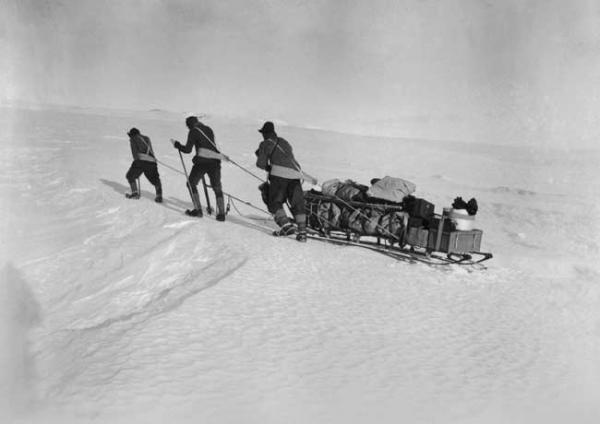
Unlike Amundsen, Scott used ponies to move his gear. However, the ponies, poorly suited to the environment, quickly froze to death, leaving Scott and his men no recourse but dragging the sledges themselves. The slow and costly method seen here contributed to the expedition's tragic outcome.
Scott in his base camp shack
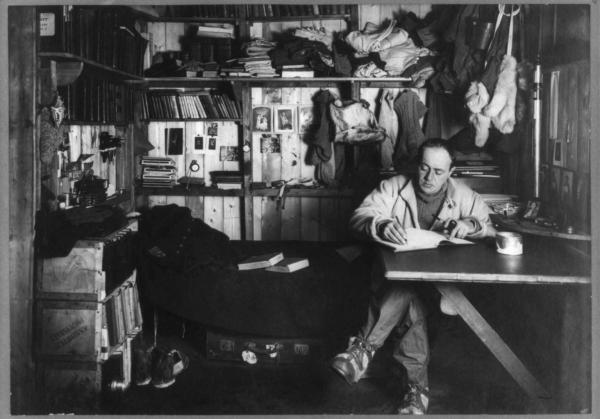
Whereas Amundsen built a small base camp shack that he expanded only as needed, Scott and his team erected a complex structure with room for the ponies and an area for scientific dissections. This extra construction and experimentation cost Scott precious time, leaving him stranded at the South Pole just as the summer weather began to transition into deadly winter storms, MacPhee said.
Sign up for the Live Science daily newsletter now
Get the world’s most fascinating discoveries delivered straight to your inbox.
Amundsen's team at the pole
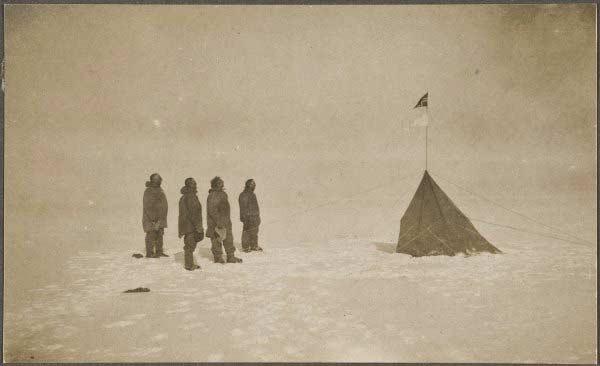
Amundsen became the first man to set foot on the South Pole on Dec. 14, 1911. They erected a small tent and a flag to signal to Scott that they had beaten him. Amundsen is not actually in this photo, though, as he is behind the camera.
Scott and team at the South Pole
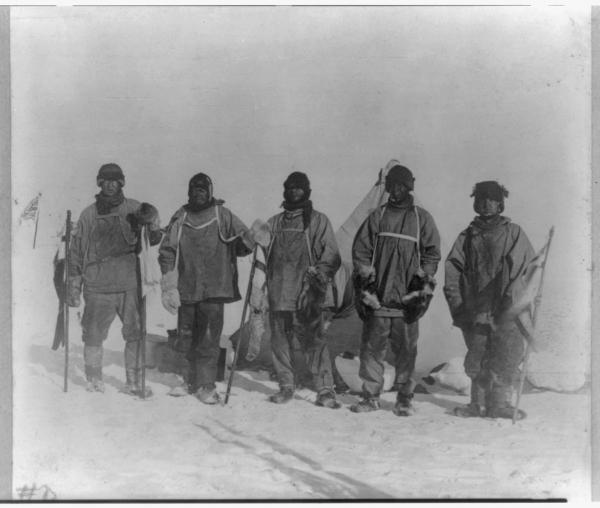
On January 17, 1912, Scott and team members Edward A. Wilson, Edgar Evans, Lawrence Oates and Henry Robertson Bowers reached the South Pole. During the trip back, blizzards, poor equipment and food shortages eventually killed every member of the team. They were one day away from making it to the next supply depot, which held the food and fuel needed to keep them alive, according to the AMNH.










